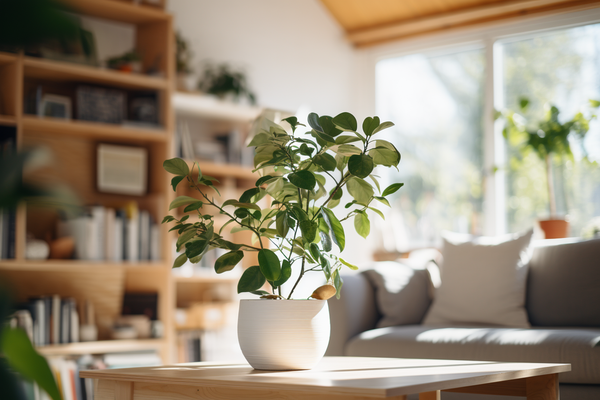Hey there! Have you ever wondered about the impact of your daily activities on our planet? Or perhaps you're already aware and looking for ways to make your lifestyle more sustainable, especially in your apartment living.
Well, you've come to the right place! We're going to dive into the world of sustainable apartment living and why it's not just important, but also incredibly beneficial for you and the environment.
The Importance of Sustainable Apartment Living

Let's face it, our everyday activities, from the electricity we use to the waste we produce, have a significant impact on the environment. According to the Environmental Protection Agency (EPA), the average American produces about 4.9 pounds of trash per day. That's a lot of waste!
But here's the good news: by adopting sustainable practices in our apartments, we can significantly reduce our carbon footprint.
Benefits of Sustainable Apartment Living

- Environmental benefits: By living sustainably, you're helping to conserve natural resources, reduce pollution, and combat climate change. It's like giving Mother Earth a helping hand!
- Health benefits: Many sustainable practices, like using non-toxic cleaning products or growing indoor plants, can improve your health by reducing exposure to harmful chemicals and improving air quality.
- Financial benefits: Yes, you heard it right! Sustainable living can save you money. Energy-efficient appliances, for example, consume less electricity, reducing your utility bills.
Practical Tips for Sustainable Apartment Living
Ready to start your journey towards sustainable apartment living? Here are some practical tips to get you started:
Energy Efficiency

- Switch to LED lights: They use up to 80% less energy than traditional bulbs and last much longer.
- Use energy-efficient appliances: Look for the Energy Star label when buying new appliances. They might be more expensive upfront, but they'll save you money in the long run.
- Unplug devices when not in use: Did you know that devices can still consume energy even when they're turned off? It's called "phantom energy." Unplugging devices can help you save energy and money.
Water Conservation

- Install low-flow showerheads and faucets: They can reduce your water usage by up to 60%.
- Fix leaks promptly: A dripping faucet can waste up to 3,000 gallons of water per year. That's enough to take more than 180 showers!
- Reuse water where possible: For example, you can use the water from washing vegetables to water your plants.
Waste Reduction

- Recycle and compost: It's a great way to reduce the amount of waste that ends up in landfills.
- Buy in bulk to reduce packaging waste: Plus, it's often cheaper!
- Choose products with minimal packaging: Less packaging means less waste.
Sustainable Transportation

- Walk, bike, or use public transportation: It's not just good for the environment, but also for your health!
- Carpool or use electric vehicles: If you need to drive, these are more sustainable options.
- Remember, every little bit helps. Even small changes can make a big difference. So, are you ready to embrace sustainable apartment living? Let's do this, for our planet and for ourselves!
Incorporating Greenery into Apartment Living

Adding a touch of green to your apartment can do wonders, not just for your living space, but also for your well-being.
- Air Purification: Plants like spider plant and snake plant are known to remove toxins from the air, improving the air quality in your apartment.
- Mental Health: Studies have shown that indoor plants can reduce stress and improve mood.
- Aesthetics: Let's face it, plants add a touch of beauty to any space!
Starting a Small Indoor Herb Garden:
- Choose the Right Plants: Some herbs like basil, parsley, and chives grow well indoors.
- Provide Adequate Light: Most herbs need about 6 hours of sunlight. A south-facing window is usually a good spot.
- Don't Overwater: Herbs don't like to sit in water. Make sure the pots have drainage holes and the soil is well-draining.
Sustainable Shopping Habits

Sustainable shopping is all about making choices that are good for the environment and society. Here's how you can do it:
Buying Second-Hand Furniture and Appliances:
- Pros: It's cheaper and reduces demand for new products, which in turn reduces resource extraction and waste.
- Cons: The items may have some wear and tear. But hey, that's where your DIY skills can come in handy!
Choosing Sustainable and Ethical Brands:
- Pros: These brands are committed to reducing their environmental impact and ensuring fair labor practices.
- Cons: They may be more expensive. But remember, you're paying for quality and sustainability!
Reducing, Reusing, and Recycling:
- Reduce: Buy only what you need. This reduces waste and saves you money.
- Reuse: Before throwing something away, think if it can be reused. Old jars, for example, can be used for storage.
- Recycle: If you can't reduce or reuse, recycle. It's the last resort to prevent waste from ending up in landfills.
Conclusion
Sustainable apartment living is not just about doing good for the environment. It's also about improving your health, saving money, and creating a home that's beautiful and comfortable. So, are you ready to start your journey towards sustainable apartment living? Remember, every small step counts. Let's make a difference, one apartment at a time!
References
Environmental Protection Agency. (2020). National overview: Facts and figures on materials, wastes and recycling. https://www.epa.gov/facts-and-figures-about-materials-waste-and-recycling/national-overview-facts-and-figures-materials
Energy Star. (2023). About energy star. https://www.energystar.gov/about
U.S. Department of Energy. (2023). LED lighting. https://www.energy.gov/energysaver/save-electricity-and-fuel/lighting-choices-save-you-money/led-lighting
Environmental Protection Agency. (2023). Fix a leak week. https://www.epa.gov/watersense/fix-leak-week
From Waste to Resource
Our efforts and commitment to waste reduction and sustainability begin with our production process.
Plastic and agriculture wastes are repurposed and utilized through innovative transformation into a biodegradable composite material.

